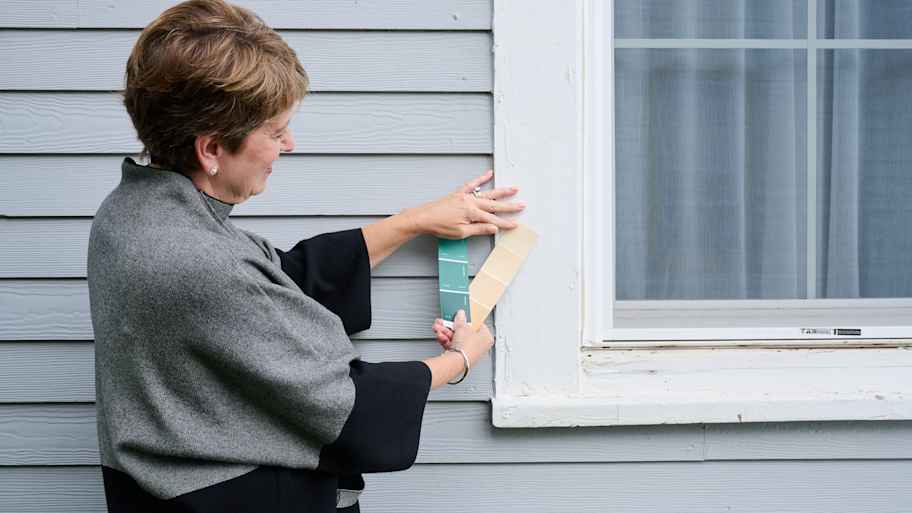What Sheen Is Best for Exterior Painting?
These days, a glossy finish isn’t the only go-to for exterior paint jobs


Sheen relates to the shininess of a paint’s finish and how much light it reflects off the surface. There isn’t one “best” sheen for exterior paint projects. You should base your choice on the look you want, the material you’re painting, the surface condition, your budget, and more. Regardless, the sheen you pick will have a big impact on the outcome of your project.
The benefits of painting your home exterior are more than just upping your curb appeal. A new coat of paint helps protect siding and trim and extends their lifespan. But there’s more to consider than just picking the right paint color. The sheen you select influences the paint’s overall aesthetic and durability.
Exterior paint formulas have come a long way in recent decades. This means you aren’t just stuck with high-gloss finishes to get the weather resistance and durability you need. But some formulas are more forgiving of surface imperfections, and others offer extra durability. Struggling to work out what the best type of exterior paint finish is for your home makeover? This guide will help you decide.
1. Flat/Matte

Low-luster matte or non-reflective flat paints are staples for interior surfaces. But because of their lack of durability, they were previously a no-no for home exteriors. However, in recent years, manufacturers have been introducing tougher flat paints for use on exterior surfaces.
These resin-light paints have little to no sheen—typically up to around 12% reflectiveness—so they soak up any light that hits the home’s surface. They’re sometimes called concealer paints, as this lack of reflectiveness makes them ideal for hiding imperfections on rough siding materials like wood or masonry.
If you don’t want a glare coming off your sun-drenched home, matte sheens will absorb the sunlight. They also offer an appealing contemporary, velvety texture and ease of application. And, even though they aren’t so durable, it’s easy to touch up this exterior paint type.
Though their strength has increased over the years, these chalky, porous paint finishes are still the least durable of the lot. They’re also more difficult to clean than the higher sheens. You’ll likely face the hassle and expense of repainting matte-painted siding sooner than you would with a satin or gloss sheen, especially if your home regularly experiences extreme weather.
Pros:
Quick dry time
Absorbs sunlight
Easy to touch up
Forgiving of flaws
Smooth application
Contemporary finish
Cons:
Least durable
Not easy to clean
Won’t stand up to extreme weather
Can look lackluster on homes in shady spots
2. Eggshell

A soft eggshell exterior paint could be the way to go if you want a low-luster, non-reflective finish for your sun-soaked siding. Eggshell gives you more durability and depth of color than you get with a matte finish.
The subtle reflective sheen—ranging from 12% to 20% reflectiveness—is perfect if you have lots of siding blemishes to hide, and it glides onto walls with ease. Easier to clean than a matte sheen, eggshell paint still doesn’t offer the hardcore durability or ease of cleaning that you get with glossier finishes.
Pros:
Easy to clean
Forgiving finish
Ideal for DIY application
More durable than flat paints
Pulls out paint color for an inviting appearance
Provides a soft glow, even on sun-soaked exteriors
Cons:
Tricky to touch up
Not as durable as gloss finishes
3. Satin

Satin paints are taking over glossier finishes as the go-to choice for exterior paint sheens. With modern moisture-resistant, durable formulas widely available, satin paints offer lots of bonuses. Satin sheens are reflective enough to protect your home from UV rays—having between 25% and 40% reflectiveness—but they aren’t so glossy that they hurt your eyes to look at when the sun is beating down.
While they won’t mask imperfections like the low-luster finishes, satin paints are still reasonably forgiving on most surfaces, and you won’t have to repaint as often. Plus, if your house gathers dirt from nearby roads, this sheen is easy to hose down. It’s ideal for painting shutters, wood and cement siding, trim, and doors.
However, because this sheen shows lap marks more easily than matte paints, you’ll need to practice your application technique for a flawless finish.
Pros:
Durable
Versatile
Subtle shine
Easy to clean
Stain and dirt-resistant
Cons:
Tricky to achieve a flawless finish
Needs thorough mixing for even application
4. Semi-Gloss
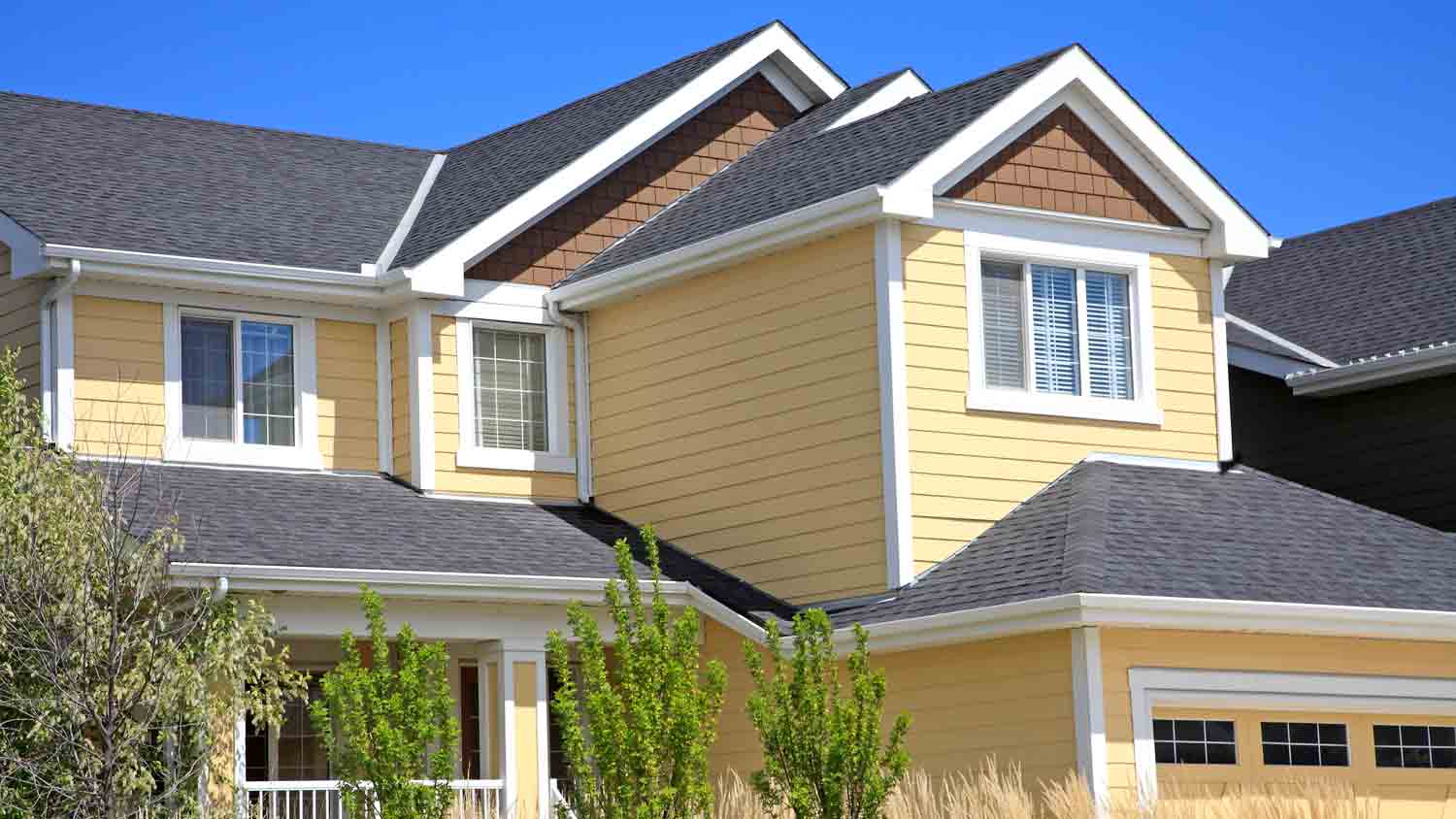
If you want durability and definition for exterior trim, architectural details, or doors, nothing quite beats shiny semi-gloss paint. The elegant, luminous finish ranges from around 40% to 85% reflectiveness, and it’s easy to clean, making it ideal for high-traffic, dirt-grabbing doors and shutters.
However, semi-gloss paint isn’t the best choice for covering swathes of siding. The reflective surface will show all the bumps and blemishes, and applying this pricey, thick paint isn't easy. Lap marks and streaks are tricky to avoid, and achieving a flawless finish over large areas could quickly become a headache. Plus, it could cause too strong of a glare in direct sunlight, although the high sheen certainly makes a bold statement.
Another consideration is that it’s more common for semi and high-gloss paints to be oil-based rather than latex or acrylic-based. While this adds to their durability, oil-based paints typically emit volatile organic compounds (VOCs) that can harm people, pets, and the environment, according to the U.S. Environmental Protection Agency.
Pros:
Very durable
Easy to clean
Stain-resistant
High sheen defines details
Cons:
Expensive
Tricky to apply
Shows imperfections
Not always environmentally friendly
5. High-Gloss

While high-gloss exterior paints are the most durable of all the paint sheens, these days, they’re not the best choice in most situations. If you’re looking for a hard-as-nails paint for trim, this could be the sheen for you. Otherwise, the extreme reflectiveness (over 85%), cost, challenge to achieve a smooth finish, and likelihood of showing imperfections make high-gloss paint a less appealing choice.
On top of the difficulties in the actual painting process, high-gloss paints require more attention to detail when prepping your home for exterior painting. Given the cost to paint the exterior of your home is increased with this type of paint, you don’t want to mess things up when DIYing. If you don’t have a steady hand and want to use high-gloss paint, hire a professional exterior painter near you.
Pros:
Very tough
Easy to clean
High-definition for architectural details
Cons:
Costly
Highlights blemishes
Can emit harmful VOCs
Challenging to achieve a smooth finish
Not easy on the eye across large areas
How to Choose the Best Sheen for Exterior Paint
Most people nowadays opt for satin or semi-gloss paint sheens. However, like most decisions in painting, the best sheen for your exterior painting project will really come down to exactly what look you want, the specifics of your project, and your budget. These five factors can help you narrow down what the best sheen for you will be.
Experience: The glossier the sheen, the easier it is to make mistakes. Picking a lower luster, if appropriate, will make your job easier if you want to DIY. An exterior house painter can typically work well with any sheen.
Siding or trim condition: Got lots of bumpy, knotty wood siding? You’d be better off going with a lower-luster finish that’s less likely to show off all those little imperfections.
Square footage: With a high-gloss finish, getting a flawless finish on siding that covers most of your home’s exterior will be nearly impossible. Stick with satin, eggshell, or matte for a more subtle, economical, and easy-to-apply finish.
Aesthetic: A lower sheen means less glare on a sunny home and a more subtle finish that blends into your home’s surroundings. A higher sheen makes a bold statement, provides more light in shady spots, and highlights architectural details.
Traffic volume: If you have kids who like to splash in a mud bath every now and again or a series of dusty roads nearby, you might want to choose a more wipeable, higher-sheen finish.
Sara Coleman contributed to this article.
Frequently Asked Questions
If you’re searching for the best exterior paint to withstand sun exposure, look for high-quality acrylic paint with natural earth pigments. Quality acrylic paint is made for sun exposure because it has a protective barrier, offering excellent UV resistance and better durability for protection against harsh sun rays.
Use a gloss or semi-gloss sheen to paint your front door. Glossy paint highlights any architectural details you want to show off on your door. Gloss or semi-gloss finishes can withstand nicks and scrapes better than a matte or eggshell finish, and they’re much easier to clean than matte or eggshell.


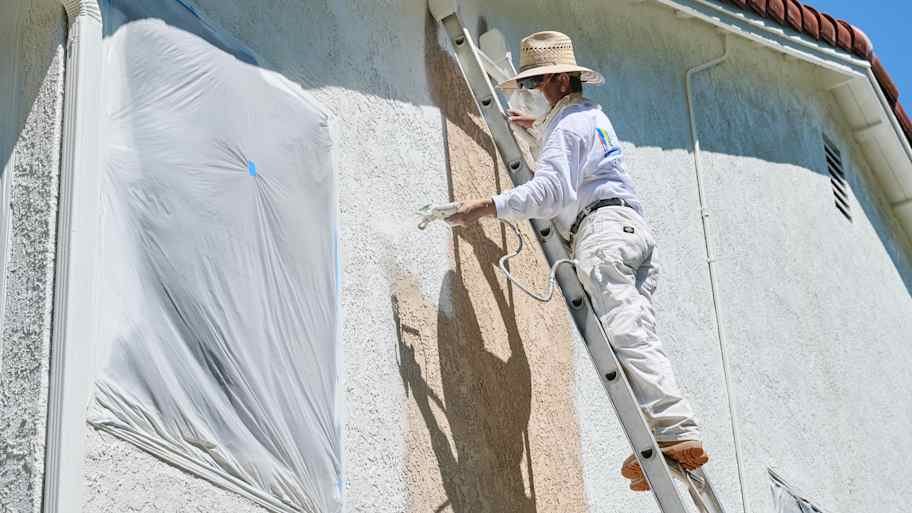
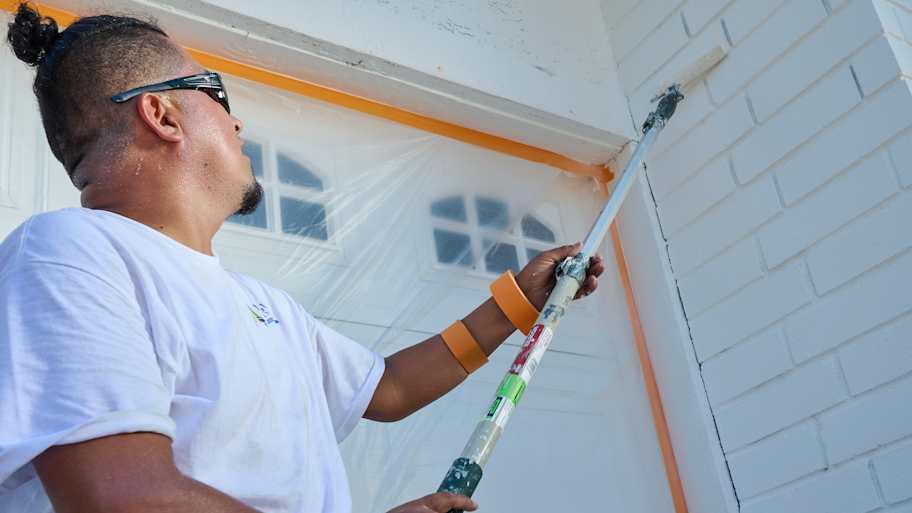
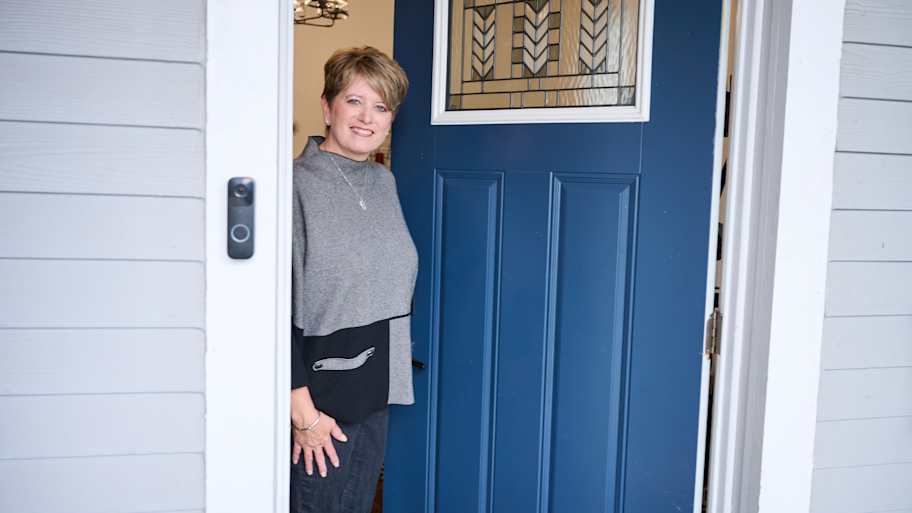
- The 7 Best Paint Sheens for Your Bedroom
- The Ultimate Guide to the 5 Types of Paint Finishes
- Satin vs. Semi-Gloss Paint Finish: What’s the Difference?
- What Is the Best Paint Sheen for Kitchens?
- The 5 Best Paint Sheens for Bathrooms
- What’s the Difference Between Satin and Semi-Gloss Paint?
- Best Paint for Trim and Baseboards: A Complete Guide
- Best Paint Finish For Bathroom: A Complete Guide
- Everything to Know About Satin Paint
- Eggshell Paint vs. Semi-Gloss: What’s the Difference?



